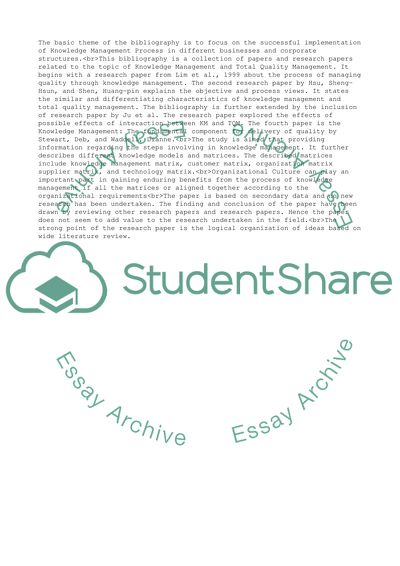Cite this document
(Knowledge Management and Its Relationship with TQM Course Coordinator Annotated Bibliography, n.d.)
Knowledge Management and Its Relationship with TQM Course Coordinator Annotated Bibliography. Retrieved from https://studentshare.org/management/1742785-knowledge-management-and-its-relationship-with-tqm
Knowledge Management and Its Relationship with TQM Course Coordinator Annotated Bibliography. Retrieved from https://studentshare.org/management/1742785-knowledge-management-and-its-relationship-with-tqm
(Knowledge Management and Its Relationship With TQM Course Coordinator Annotated Bibliography)
Knowledge Management and Its Relationship With TQM Course Coordinator Annotated Bibliography. https://studentshare.org/management/1742785-knowledge-management-and-its-relationship-with-tqm.
Knowledge Management and Its Relationship With TQM Course Coordinator Annotated Bibliography. https://studentshare.org/management/1742785-knowledge-management-and-its-relationship-with-tqm.
“Knowledge Management and Its Relationship With TQM Course Coordinator Annotated Bibliography”, n.d. https://studentshare.org/management/1742785-knowledge-management-and-its-relationship-with-tqm.


